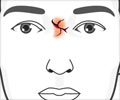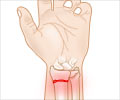A working group of the International Osteoporosis Foundation (IOF) has issued a literature review of prospective controlled studies comparing the efficacy and safety of two minimally

Conservative treatment of vertebral fractures is typically through rest, pain medication, bracing and muscle relaxants. VP and BKP are two minimally invasive techniques that consist of inserting a bone cement into the compressed vertebra and stabilising the fracture.
In the studies observed, the review found that:
- Overall, VP and BKP are relatively safe procedures and serious complications are rare.
- In the short term, VP and BKP provide quicker pain relief and mobility recovery than does conservative treatment alone.
- VP and BKP are able to stabilise the fracture and in some cases restore lost vertebral body height.
- The added benefit of injecting cement over a sham-controlled surgery is still contentious.
- The clinical outcome after VP and BKP appears to be dependent on the time elapsed between the fracture and the intervention.
- The incidence of new (including adjacent) vertebral fractures are similar after VP or BKP, but longer term data are required.
- Further studies are needed with standardised and systematic reporting of health outcomes and complications.
Kristina Åkesson, chair of the IOF Fracture Working Group and Professor at the Department of Orthopedics, Skåne University Hospital Malmö in Sweden, stated, "Referring physicians should be aware that VP and BKP are available options for the management of vertebral compression fractures, with possible clinical benefits to their patients in terms of acute pain relief and improved quality of life. However, longer follow-up of patients are needed to ensure the efficacy and safety of these techniques, which should not be considered as a substitute for the medical management of osteoporosis, vitally needed in these patients at high risk of other fractures."
Source-Eurekalert















